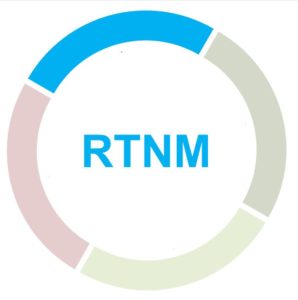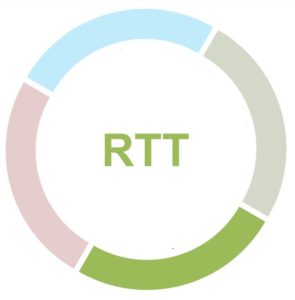

Patients are informed about potential delays when crossing international borders after having a nuclear medicine or theranostic procedure
Activation of radiation detectors
- Radiation detectors are routinely used by security personnel to prevent the use of radiologic devices for criminal use, not for the purpose of monitoring or restricting the movement of patients who have undergone diagnostic or therapeutic radioactive procedures.1,2
- However, patients receiving diagnostic or therapeutic doses of radiopharmaceuticals have the potential to activate alarms at facilities where sensitive radiation detectors are used.1
- The locations where sensitive radiation devices are used include, but are not limited to, airports, border crossings, government buildings, shopping malls, train stations, and steel recycling plants.1,3–6
- Reports have documented patients being detained or prohibited to travel, required to provide clinical documentation of their radiopharmaceuticals use, requiring security rescanning, and/or undergoing a thorough security screening1.
- The duration of time in which patients may trigger radiation alarms varies according to the radiopharmaceutical and dose, the sensitivity of detectors and the patient’s elimination rate and/or disease burden:1,7,8
- As part of their preparation for the procedure, patients should be educated by the institution about the risk of setting off radiation detectors and the potential for delay and inconvenience if travelling.9,10
Documentation for the patient
- Institutions can assist patients and security personnel by providing patients with a letter that documents the patient’s procedure involving radiopharmaceuticals.11
- The letter will not prevent a patient from setting off a detector or from the potential of subsequent questioning by security personnel. However, the situation and discussion could be facilitated.
- It can be suggested to patients to not undertake travelling in major public areas, unless they are willing to accept some inconvenience.11
- Patients should be provided with a letter on official institutional letterhead with, at minimum, the following information1,12:
- Patient identification
- Institutional 24-hour contact information
- A statement indicating the radiation received by the patient is for medical use and the patient poses no danger to the public with the specifics to include:
- Date of the imaging or therapeutic procedure
- Name of the radionuclide and administered activity
- Half-life of the isotope
- Patients are advised to carry their letter at all times when travelling and to retain the letter for the duration they are potentially able to activate radiation detectors. For patients undergoing theranostic procedures it may be advised to carry their documentation for up to 4-6 months post therapy.
- If a security personnel requires a copy for retention, patients are advised to ask that a photocopy of the letter be made rather than relinquishing the original.
References
- Bikas A, Wu D, Bethancourt E, et al. Detection at public facilities of 131-I in patients treated for differentiated thyroid cancer: Frequency, sites, management by security agents, and physician documentation recommended for patients. J Nucl Med. 2019;60(5):638-643. doi:10.2967/jnumed.118.213256
- International Atomic Energy Agency. Detection of Radioactive Materials at Borders.; 2002. Accessed December 9, 2020. https://www-pub.iaea.org/MTCD/Publications/PDF/te_1312_web.pdf
- Kaniuka-Jakubowska S, Lewczuk A, Mizan-Gross K, Obołończyk L, Lass P, Sworczak K. Giving radioiodine? Think about airport security alarms. Rev Espanola Med Nucl E Imagen Mol. 2012;31(3):148-150. doi:10.1016/j.remn.2011.10.012
- Buettner C, Surks MI. Police detainment of a patient following treatment with radioactive iodine. JAMA. 2002;288(21):2687-2687. doi:10.1001/jama.288.21.2687-JLT1204-3-1
- Dauer LT, Williamson MJ, St Germain J, Strauss HW. Tl-201 stress tests and homeland security. J Nucl Cardiol Off Publ Am Soc Nucl Cardiol. 2007;14(4):582-588. doi:10.1016/j.nuclcard.2007.04.021
- Paz-Filho GJ, Busnello JV, Licinio J, Zelmanovitz F. Radioiodine treatment triggers security alarms: Case report and review of literature. J Nucl Med. 2008;49(2):337. doi:10.2967/jnumed.107.047951
- Gangopadhyay KK, Sundram F, De P. Triggering radiation alarms after radioiodine treatment. BMJ. 2006;333(7562):293-294. doi:10.1136/bmj.333.7562.293
- Kendi AT, Mailman JA, Naraev BG, Mercer DJ, Underwood JK, Halfdanarson TR. Patient travel concerns after treatment with 177Lu-DOTATATE. J Nucl Med. 2020;61(4):496-497. doi:10.2967/jnumed.120.243238
- Dauer LT, Casciotta KA, Erdi YE, Rothenberg LN. Radiation dose reduction at a price: The effectiveness of a male gonadal shield during helical CT scans. BMC Med Imaging. 2007;7:5. doi:10.1186/1471-2342-7-5
- Siegel JA, Marcus CS. Released nuclear medicine patients, security checkpoints, and the NRC. J Nucl Med Off Publ Soc Nucl Med. 2008;49(2):41N-3N; discussion 43N.
- International Atomic Energy Agency. Release of Patients After Radionuclide Therapy.; 2009. Accessed December 9, 2020. https://www-pub.iaea.org/MTCD/publications/PDF/pub1417_web.pdf
- Society of Nuclear Medicine and Molecular Imaging. Nuclear Medicine and Radiation Safety. Accessed December 9, 2020. https://www.snmmi.org/Patients/About/content.aspx?ItemNumber=22909
Related Posts
-
-
-
Lactating and/or breastfeeding individuals having a nuclear medicine procedure are counselled regarding breastfeeding
